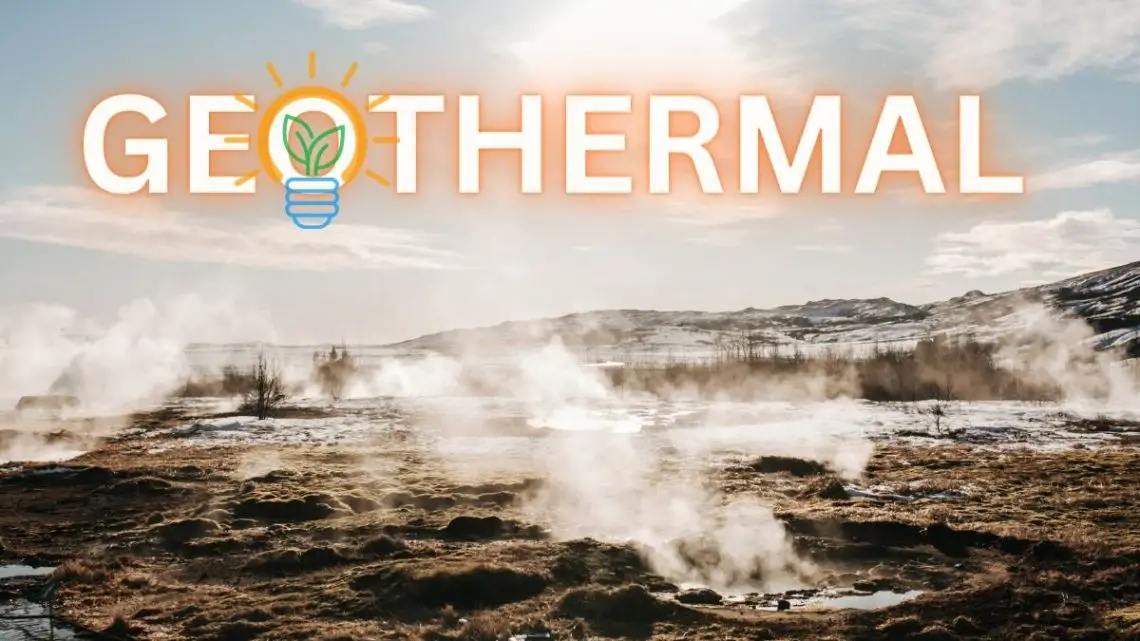
Is superhot rock geothermal energy the key to unlocking huge amounts of clean energy?
March 26, 2024According to CATF, the answer is yes.
Clean Air Task Force (CATF) has created an innovative modeling tool that can calculate where to find superhot rock geothermal energy as well as its possible power potential.
Commercializing superhot rock.
CATF conducted the preliminary modeling of its Superhot Rock Energy tool with the University of Twente (UT) in the Netherlands. The modeling investigates the possibility of commercializing superhot rock geothermal energy. It does this by estimating the tech’s energy potential across the globe.
But what exactly is superhot rock geothermal energy? It is a potential renewable power source that is produced from extremely hot dry rock of 400°C (752°F) or hotter. CATF’s technology uses innovative deep drilling technologies to access the rock. According to researchers, this superhot rock can be found all over the world.
Terra Rogers, Director for Superhot Rock Energy at CATF, said of the preliminary modeling that CATF’s “findings suggest an enormous opportunity to unlock vast amounts of clean energy beneath our feet.” Rogers also added that with the dozens of wells around the world having reached superhot conditions, all that it would take is the “right technical and commercial advances” to see commercial-scale plants become a reality in a matter of years.
Geothermal energy that is always available.
The Superhot Rock Energy technology can access geothermal energy that has the potential to provide renewable, carbon-free energy that is abundant, always available and cost competitive. In fact, according to what CATF’s preliminary model suggests, commercial scale superhot rock energy would be cost-competitive with current market energy prices.

What’s more, the geothermal energy tech can reportedly do all this with a land-use footprint far smaller than other energy sources.
Why geothermal energy shouldn’t go untapped.
 Rogers explained that as much as “63 terawatts of clean firm power” can be produced from tapping into only 1% of the world’s superhot rock energy potential. To put this another way, that would be enough to meet the world’s entire electricity demand in 2021 by almost more than eight times.
Rogers explained that as much as “63 terawatts of clean firm power” can be produced from tapping into only 1% of the world’s superhot rock energy potential. To put this another way, that would be enough to meet the world’s entire electricity demand in 2021 by almost more than eight times.
Superhot resources are available throughout the world. Except for Antarctica, thousands of terawatt-hours exist on every inhabited continent. In the US alone, a mere 1% of superhot rock energy potential could generate 4.3 terawatts of clean firm power – “enough energy to power New York City 687 times over.”
FAQs about Superhot Rock Geothermal Energy and CATF’s Modeling Tool
1. What is superhot rock geothermal energy?
Superhot rock geothermal energy is a form of renewable power generated from extremely hot dry rocks with temperatures of 400°C (752°F) or hotter. This energy is harnessed by using advanced deep drilling technologies to access the heat stored in these rocks.
2. How does CATF’s modeling tool work?
The Clean Air Task Force (CATF), in collaboration with the University of Twente (UT) in the Netherlands, developed an innovative modeling tool designed to locate superhot rock geothermal energy sources worldwide and estimate their power potential. This tool helps in assessing the feasibility of commercializing superhot rock geothermal energy.
3. Can superhot rock geothermal energy be found everywhere?
Yes, according to researchers, superhot rock can be found globally, with the potential for superhot conditions already reached in dozens of wells around the world. Except for Antarctica, significant amounts of superhot resources are available on every inhabited continent.
4. What makes superhot rock geothermal energy a desirable renewable energy source?
Superhot rock geothermal energy offers several benefits: it’s renewable, carbon-free, abundant, always available, and cost-competitive with current market energy prices. Additionally, it requires a significantly smaller land-use footprint compared to other energy sources.
5. What are the potential impacts of commercializing superhot rock geothermal energy according to CATF?
Terra Rogers, Director for Superhot Rock Energy at CATF, stated that commercializing this technology could unlock vast amounts of clean energy. The preliminary modeling suggests that tapping into just 1% of the world’s superhot rock energy potential could produce enough power to significantly exceed global electricity demands.
6. How does superhot rock geothermal energy compare to other renewable energy sources in terms of reliability?
Unlike some renewable energy sources that can be intermittent (such as solar and wind), superhot rock geothermal energy can provide a constant power supply. This makes it an especially reliable form of energy that can contribute significantly to stabilizing the grid.
7. What are the challenges in commercializing superhot rock geothermal energy?
While the potential is enormous, commercial-scale exploitation of superhot rock geothermal energy will require overcoming technical and commercial hurdles. These include developing more advanced and cost-effective deep drilling technologies and creating a conducive regulatory and investment climate.
8. What does CATF’s preliminary model suggest about the cost of superhot rock geothermal energy?
CATF’s preliminary model suggests that commercial-scale superhot rock geothermal energy could be cost-competitive with current market energy prices, making it an economically viable option for large-scale energy production.
9. How much energy could be generated from superhot rock geothermal sources?
According to Terra Rogers, tapping into only 1% of the world’s superhot rock energy potential could produce 63 terawatts of clean firm power, which is more than eight times the global electricity demand in 2021.
10. What steps are being taken towards commercializing superhot rock geothermal energy?
While specific details may vary, the move towards commercialization involves continued research and development, investments in technology and infrastructure, and collaboration between governments, private companies, and research institutions to overcome the existing challenges and realize the full potential of superhot rock geothermal energy.



 With over 15 years of reporting hydrogen news, we are your premier source for the latest updates and insights in hydrogen and renewable energy.
With over 15 years of reporting hydrogen news, we are your premier source for the latest updates and insights in hydrogen and renewable energy.